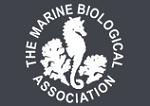APHOTOMARINE
An educational resource dedicated mainly to the photography
and diversity of marine life that can be found in coastal waters
and intertidal areas of Great Britain and Ireland by David Fenwick.

Eumida maia
- worm dorsal view 1
Phyllodocid worm
Eumida maia
- worm lateral view 1
Phyllodocid worm
Eumida maia
- worm lateral view 2
Phyllodocid worm
Eumida maia
- worm ventral view 1
Phyllodocid worm
Eumida maia
- dorsal view tail 1
Phyllodocid worm
Eumida maia
- dorsal view tail 2
Phyllodocid worm
Eumida maia
- sampling site 1
Phyllodocid worm
Eumida maia
- sampling site 2
Phyllodocid worm
Eumida maia
- sampling site 3
Species found in a sample consisting largely of sponges and barnacles. Sample was collected from the concrete supports of the slipway in the SW corners of Newlyn Harbour, Newlyn, Cornwall, 19.02.15 and 04.03.15.
Phyllodocid worm
Eumida maia
- worm dorsal view 2
Phyllodocid worm
Eumida maia
- anterior dorsal view 1
Phyllodocid worm
Eumida maia
- dorsal markings 1
Phyllodocid worm
Eumida maia
- anterior dorsal view 2
Phyllodocid worm
Eumida maia
- anterior dorsal view 3
Phyllodocid worm
Eumida maia
- dorsal markings 2
Two specimens above found in a sample of scrapings taken from a pontoon at Nwlyn Marina, Newlyn, Cornwall. 29.04.15.
All specimens were determined by DNA sequencing carried out by Arne Ntgren.
Eumida maia Nygren & Pleijel, 2010 is a cryptic species derived from Eumida cf. sanguinea.
APHOTOMARINE supports open source data recording and sharing for the benefit of wildlife, recorders, research, science and education. The project recommends the following websites and works with the following bodies and organisations.
The Marine Biological Association or MBA, based in Plymouth, is one of the world’s longest-running societies dedicated to promoting research into our oceans and the life they support. Since 1884 the MBA has been providing a unified, clear, independent voice on behalf of the marine biological community.It has a growing membership in over 40 countries.
The National Biodiversity Network or NBN is a charity that supports open source data sharing and recording supporting conservation, science and education. "Why do recorders need open source?". Simply because it supports the core values of wildlife recording and the free use of records and data over a very wide network that includes partners like the Natural History Museum.
The taxonomy used here is based on that of the following database, which is also used by the MBA, NHM and the NBN.
The World Register of Marine Species or WoRMS.

